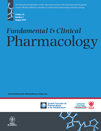Pharmacological doses of vitamin A increase caspase-3 activity selectively in cerebral cortex
Abstract
Vitamin A exerts a wide range of physiological roles from embryonic to adulthood stages of the mammalian life. However, there is a great concern regarding the deleterious effects of vitamin A use even therapeutically. It was shown that vitamin A induces behavioral impairments, for instance, anxiety-like behavior and depression, in experimental animals and humans. Caspases are enzymes associated with cell death; however, there is a role for such enzymes also in synaptic plasticity. Then, based on previously published data, we have investigated the effects of vitamin A supplementation at clinical doses (1000–9000 IU/kg/day) for 28 days on caspase-3 and caspase-8 activities in adult rat cerebral cortex, cerebellum, striatum, and hippocampus. Furthermore, we have quantified TNF-α levels, a pro-inflammatory cytokine that, besides other biological roles, trigger the extrinsic apoptotic pathway in several cellular types, in those rat brain regions. Interestingly, we found increased caspase-3 activity only in rat cerebral cortex. In all the other regions caspase-3 and caspase-8 activities did not change, as well as the levels of TNF-α. The presented results, herein, indicate that more caution is needed regarding vitamin A clinical use and, also importantly, the consumption of vitamin A-fortified foods, which are not exclusively distributed among vitamin A-deficient subjects.




